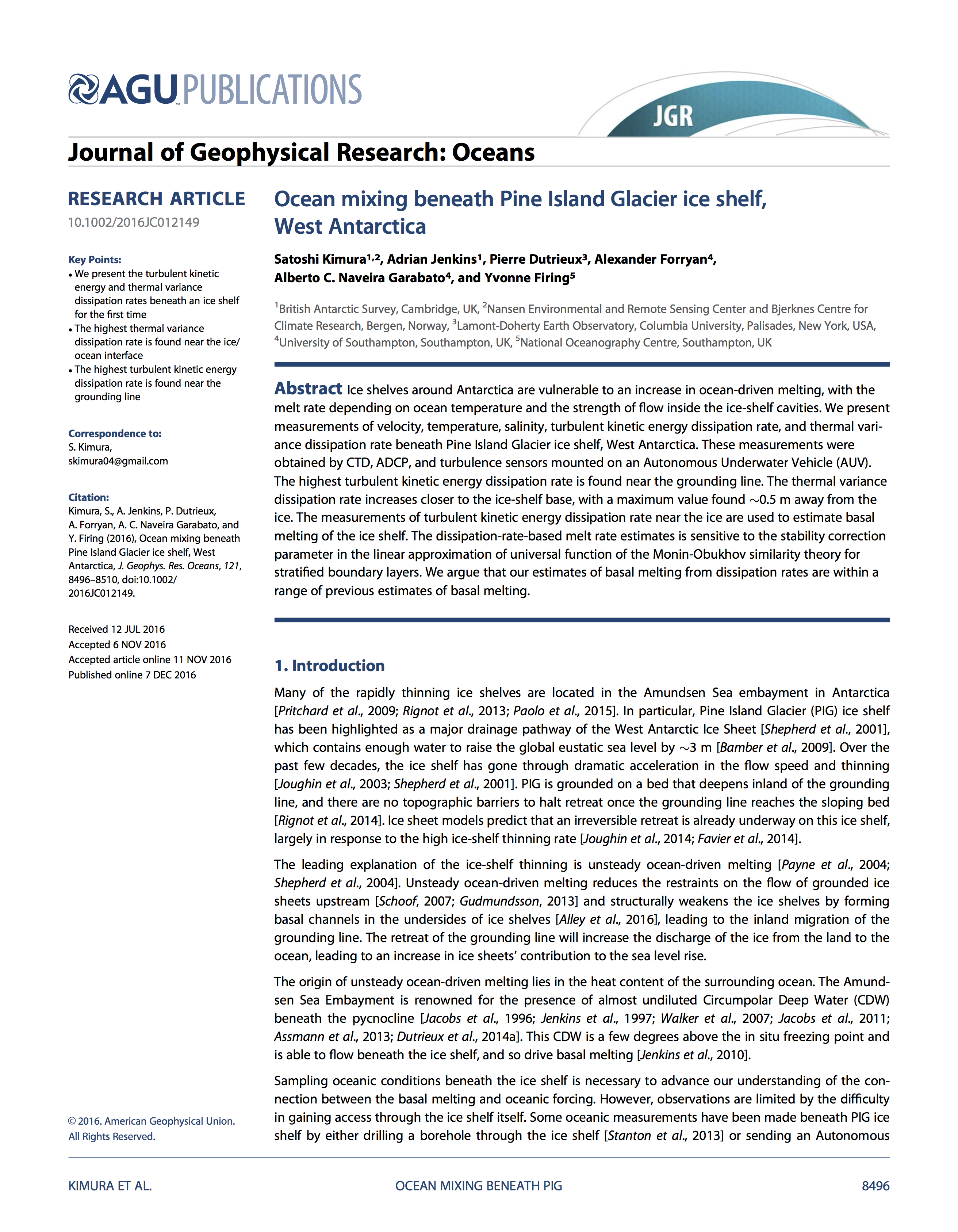Ocean mixing beneath Pine Island Glacier ice shelf, West Antarctica
Kimura, S. and Jenkins, A. and Dutrieux, P. and Forryan, A. and Naveira Garabato, A. and Firing, Y.
abstract: Ice shelves around Antarctica are vulnerable to an increase in ocean-driven melting, with the melt rate depending on ocean temperature and the strength of flow inside the ice-shelf cavities. We present measurements of velocity, temperature, salinity, turbulent kinetic energy dissipation rate, and thermal variance dissipation rate beneath Pine Island Glacier ice shelf, West Antarctica. These measurements were obtained by CTD, ADCP, and turbulence sensors mounted on an Autonomous Underwater Vehicle (AUV). The highest turbulent kinetic energy dissipation rate is found near the grounding line. The thermal variance dissipation rate increases closer to the ice-shelf base, with a maximum value found \textasciitilde0.5 m away from the ice. The measurements of turbulent kinetic energy dissipation rate near the ice are used to estimate basal melting of the ice shelf. The dissipation-rate-based melt rate estimate is sensitive to the stability correction parameter in the linear approximation of universal function of the Monin-Obukhov similarity theory for stratified boundary layers. We argue that our estimates of basal melting from dissipation rates are within a range of previous estimates of basal melting.
@article{Kimura-etal-2016,
author = {Kimura, S. and Jenkins, A. and Dutrieux, P. and Forryan, A. and Naveira~Garabato, A. and Firing, Y.},
title = {Ocean mixing beneath Pine Island Glacier ice shelf, West Antarctica},
journal = {J. Geophys. Res.},
year = {2016},
pages = {8496--8510},
volume = {121},
issue = {12},
doi = {10.1002/2016JC012149},
url = {https://eprints.soton.ac.uk/405807/}
}
